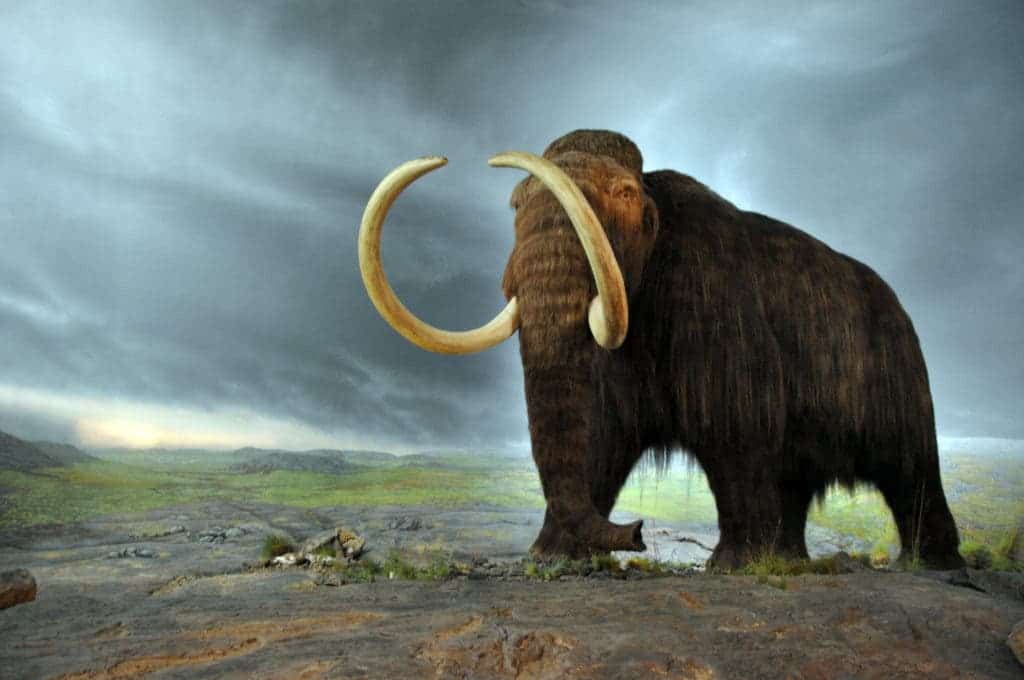
In recent times, some high-profile geneticists gained a lot of publicity when they said they’re working to resurrect the wooly mammoth, an iconic megafauna species that went extinct during the last ice age, some 10,000 years ago. The whole thing gave off massive Jurassic Park vibes, and given its ambitious scope, the mission was widely picked up by the media. After all, is there anything that science can’t do?
The problem is that, in reality, this challenge could prove virtually impossible. Richard Feynman once said ‘science is imagination in a straitjacket,’ alluding to the fact that wild ideas, by themselves, are not enough to make a breakthrough. For imagination to become reality, it needs to be materialized within physical constraints — and a new study suggests there’s a hard floor when it comes to reconstructing the genetic material of long-extinct species.
Extinct species may be dead for good
Thomas Gilbert at the University of Copenhagen in Denmark set out to probe the limits of CRISPR — a powerful tool for editing genomes that allows researchers to easily alter DNA sequences and modify gene function.
Colossal, a bioscience company recently co-founded by Harvard University geneticist George Church, aims to leverage this technology to resurrect the wooly mammoth or at least a creature very closely resembling one.
In a nutshell, the idea is to sequence DNA from samples of mammoth tusks, bones, and other materials. This genetic material would then be inserted into the Asian elephant stem cells, which would be used to make an artificial womb and a fertilized egg to breed a mammoth-elephant hybrid.
To explore the feasibility of such a lofty goal, Gilbert’s team attempted to reconstruct the genome of the Christmas Island rat, also known as Maclear’s rat (Rattus macleari), a species of rodent that went extinct in the early 1900s.
The team was able to reassemble most of the extinct rodent’s genome thanks to bits of code gleaned from the genome of the closely related Norwegian brown rat (Rattus norvegicus). Researchers were able to recover 95% of the Christmas Island rat’s genome, which sounds like a lot. Except, it’s not.
The last 5% of the genome they couldn’t make sense of is actually the most crucial part since it corresponds to the genes that differentiate the Christmas Island rat from other living relatives.
Some of the genes the researchers were able to recover include those related to the expression of tissue like the hair and ears. The Christmas Island rat had characteristically long black hair and round ears. However, many other genes were lost, their DNA sequences being broken up into many tiny pieces that cannot be reassembled.
Lost genes include those involved in the rat’s immune system and sense of smell. Cutting and pasting genes from another rat species is not really an option since smell plays a crucial role in foraging food, avoiding predators, and mating, so a modified animal might look and behave differently from the original extinct species.

Gilbert describes reassembling the genome of an extinct species as trying to piece together every page of a shredded book. If you have an intact copy of the original book, you should be able to reconstruct the original material perfectly. It might take you a while, but you’ll get there. But herein lies the problem: there are no more original copies for the genome of an extinct species.
Your next best bet is to compare your shredded pages to a similar book, but that means you’ll never be able to recover the missing pages that don’t match, even if you manage to deduce some of the content. The Christmas Island rat diverged from its Norwegian brown rat cousin about 2.6 million years ago. Due to this evolutionary divergence, most of the genetic information sequenced from old Christmas Island rat biological samples is simply lost. And this divergence is pretty similar to that between the woolly mammoth and the Asian elephant.
Some of this missing data could be recovered using current solutions or some that will be developed in the future. But the sad reality may be that some data will never be recovered, which makes the perfect resurrection of an extinct species impossible.
That being said, it’s not impossible to breed an animal that looks and behaves very closely to what you’d expect from an original mammoth or Tasmanian tiger. It’s just that these would be some hybrids of some sort, with combined features from both extinct and living species.
Ultimately, these findings don’t change much about the developments of scientific projects currently underway to resurrect extinct species. However, the study is still valuable because it helps clarify the limits of what’s actually possible. With a tighter straitjacket, maybe scientists’ imagination is diverted to more useful pathways of research. For instance, some of these efforts may be better placed in saving vulnerable species from extinction. Just saying.
The findings appeared in the journal Current Biology.






